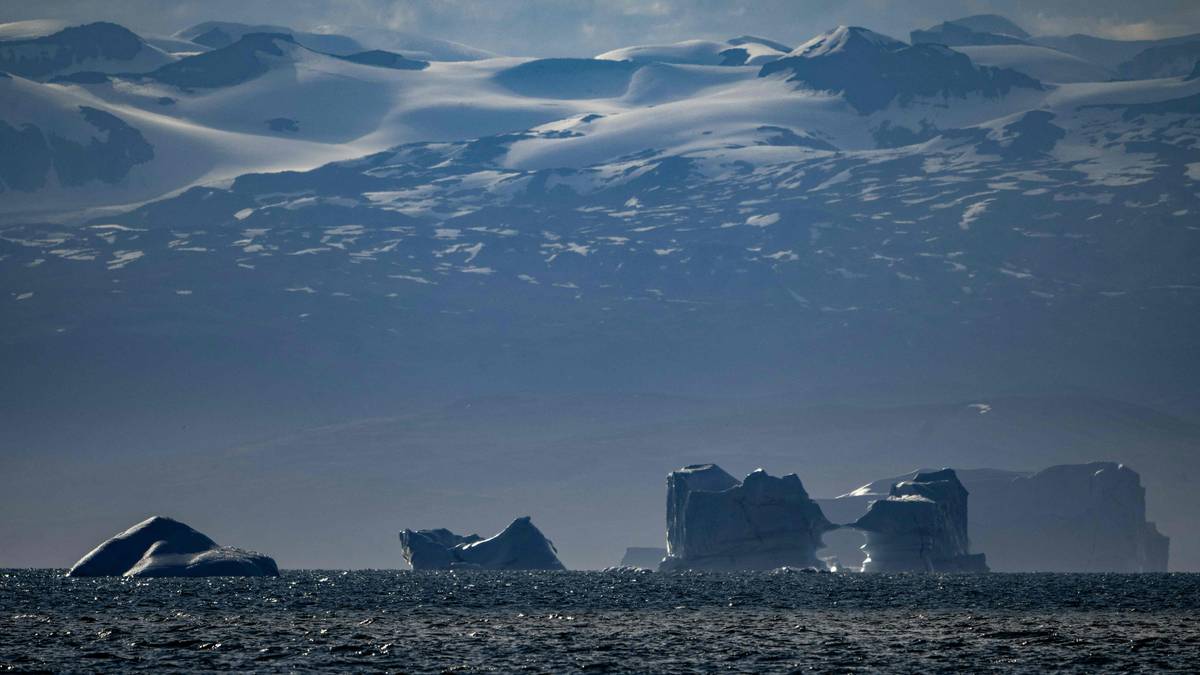This is what a new study has shown Published in the famous research journal Nature.
“I was surprised that there was so much ice that had not been included in the calculations before,” says Elaine Darelius, professor of physical oceanography at the University of Bergen. I looked into the new study.
It is known that much of the ice in Greenland has melted as a result of global warming.
But previous calculations did not take into account changes in where the front of the glaciers was located in the fjords.
According to the study, Greenland lost 5,000 square kilometers of ice in this way between 1985 and 2022. This equates to a thousand gigatons – or a thousand billion tons – of lost ice.
So Greenland may have lost 20 percent more ice than we thought.
Darelius explains that in the past, it would not have been possible to detect that this region was changing.
But in the new study, researchers think they've cracked the code in new ways.

Melting glaciers in Scoresbysund.
Photograph: Olivier Morin/AFP
The answers are found using artificial intelligence
Researchers have now used, among other things, artificial intelligence to analyze satellite images.
This is how they plotted the endpoints of Greenland's glaciers for each month over the course of 37 years. They analyzed more than 236,328 endpoints to reach their conclusion.
With the exception of one glacier that saw modest growth, the results tell a clear story:
– Almost all of Greenland's glaciers are retreating. That's the case everywhere you look, says Chad Green, a glacier researcher at NASA For the New York Times. He is the lead author of the study.
– Withdrawal, he says, happens everywhere at the same time.
Darelius says the results are important.
According to the study, the additional meltwater led to a small rise in sea levels, because the ice that melted was already partially underwater.
But that affects how the ice moves behind it, Darelius says.
When ice disappears underwater, it could help speed up the melting of ice on land, Bloomberg writes. This contributes to rising sea levels.

Ice drifts off a glacier in Scoresbysund.
Photograph: Olivier Morin/AFP
The effect on the Gulf Stream will be investigated
Another thing that has scientists concerned is the effect that additional melting could have on the AMOC, or Atlantic Meridional Overturning Circulation.
This is known to drive part of the important Gulf Stream. It has a direct impact on our lives and affects our weather and climate.

This image shows how the AMOC system works. The Gulf Stream belongs to this system.
Image: Stefan Rahmstorf (Nature 1997), Creative Commons BY-SA 4.0.
When the ice in Greenland melts, large amounts of fresh water are dumped into the sea. AMOC can be weakened.
This is a question that many oceanographers working in the North are interested in, Darelius says.
– She says the additional freshwater supply from Greenland does not boost the AMOC, so to speak.
The state of the AMOC, and whether and when it will collapse, has been the subject of much debate among scientists.
Chad Green now hopes the new findings can be used to find more answers.
– We found an additional 1,000 gigatons of missing ice. “We're now saying to ocean modellers: put this in your models and see if it affects things,” Green told The Guardian.

“Organizer. Social media geek. General communicator. Bacon scholar. Proud pop culture trailblazer.”

